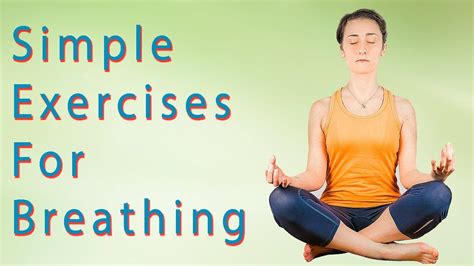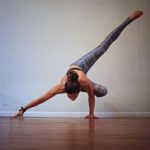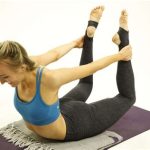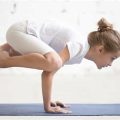Mastering Advanced Yoga Breathing Techniques for Mind and Body Harmony
Introduction
Advanced yoga breathing techniques—also known as pranayama—offer profound mental and physical benefits. These methods go beyond basic breathing practices, helping practitioners develop higher awareness, improve bodily control, and cultivate emotional balance. While rooted in ancient yogic traditions, these advanced techniques find relevance in modern wellness practices, contributing to improved respiratory function, emotional regulation, and stress management. This article explores key breathing methods, their historical roots, present-day applications, ethical considerations, and future research possibilities.
Key Concepts: Pranayama and Its Components
- Prana: Life force or vital energy present in every living being.
- Ayama: Control, extension, or regulation of breath.
- Breath Retention: Kumbhaka, the practice of holding breath between inhalation and exhalation.
- Nadi Shodhana: Alternate nostril breathing to balance bodily energies.
- Bhastrika: “Bellows breath,” used to stimulate energy and focus.
- Ujjayi: “Victorious breath,” performed with a soft constriction of the throat to create sound.
- Kapalabhati: “Skull-shining breath,” a cleansing practice through forceful exhalations.
Historical Context: Evolution of Pranayama
The origins of advanced yoga breathing techniques date back over 5,000 years, with references found in the Vedas and later elaborated in the Yoga Sutras of Patanjali. Initially, these practices were spiritual tools for self-realization, used to connect practitioners with the divine. Over time, pranayama evolved to encompass therapeutic purposes, such as calming the nervous system and enhancing lung function. The practice was revived in the 20th century by yoga pioneers like Swami Vivekananda and T. Krishnamacharya, who brought it to global attention.
Current State Analysis: Breathwork in Modern Wellness
Today, pranayama plays a pivotal role in physical fitness, mindfulness, and therapeutic interventions. Techniques like Box Breathing are widely used by athletes and military personnel to improve focus under pressure. Healthcare professionals also employ breath regulation techniques to alleviate symptoms of anxiety and respiratory diseases such as asthma and chronic obstructive pulmonary disease (COPD). Additionally, the practice complements cognitive-behavioral therapy and meditation routines, demonstrating its interdisciplinary utility.
Practical Applications of Advanced Breathing Techniques
- Stress Reduction: Techniques such as Nadi Shodhana balance the parasympathetic nervous system.
- Enhanced Athletic Performance: Ujjayi breathing regulates oxygen consumption during endurance activities.
- Improved Sleep Quality: Slow, deep breathing promotes relaxation for better sleep.
- Therapeutic Benefits: Pranayama aids in managing hypertension and cardiovascular issues.
Case Studies: Successful Integration of Breathwork
| Study | Technique | Outcome |
|---|---|---|
| Johns Hopkins, 2019 | Kapalabhati | Improved lung capacity in COPD patients |
| Stanford University, 2020 | Box Breathing | Reduced anxiety in veterans |
| Oxford, 2022 | Nadi Shodhana | Balanced heart rate variability in athletes |
Stakeholder Analysis: Who Benefits and How
- Individuals: Reduced stress and enhanced well-being.
- Healthcare Providers: Non-invasive therapeutic options for chronic conditions.
- Employers: Healthier, more focused employees.
- Yoga Instructors: Expanded curriculum with advanced practices.
Implementation Guidelines: Practicing Advanced Techniques Safely
- Start with foundational breathing exercises before moving to advanced ones.
- Practice under the guidance of a certified instructor to avoid hyperventilation.
- Ensure proper body posture for optimal breath control.
- Avoid forceful practices if experiencing respiratory illness.
Ethical Considerations: Responsible Use of Breathwork
While pranayama offers numerous benefits, it must be practiced mindfully to avoid misuse. Instructors should emphasize gradual progression to prevent adverse reactions. There are ethical concerns about the commercialization of ancient breathing practices without acknowledging their cultural origins. It is essential to maintain respect for the traditional knowledge systems from which these techniques originate.
Limitations and Future Research Directions
- Research Gaps: More longitudinal studies are needed to validate long-term benefits.
- Accessibility Challenges: Making advanced techniques approachable for beginners requires effort.
- Technological Integration: Potential for biofeedback devices to enhance breath awareness.
- Cultural Sensitivity: Balancing modernization with respect for traditional roots.
Expert Commentary: Perspectives on Advanced Breathing Techniques
Experts agree that advanced yoga breathing techniques offer powerful tools for mental, emotional, and physical health. However, they caution against rushing into complex practices without a solid foundation. Yoga instructors emphasize the importance of personalized approaches, as each individual’s capacity for breathwork varies. There is optimism about the growing role of technology in monitoring breath patterns, potentially leading to more accessible, tailored experiences. Moving forward, it is crucial to continue exploring innovative ways to integrate pranayama into modern lifestyles while upholding the ethical foundations of the practice.








